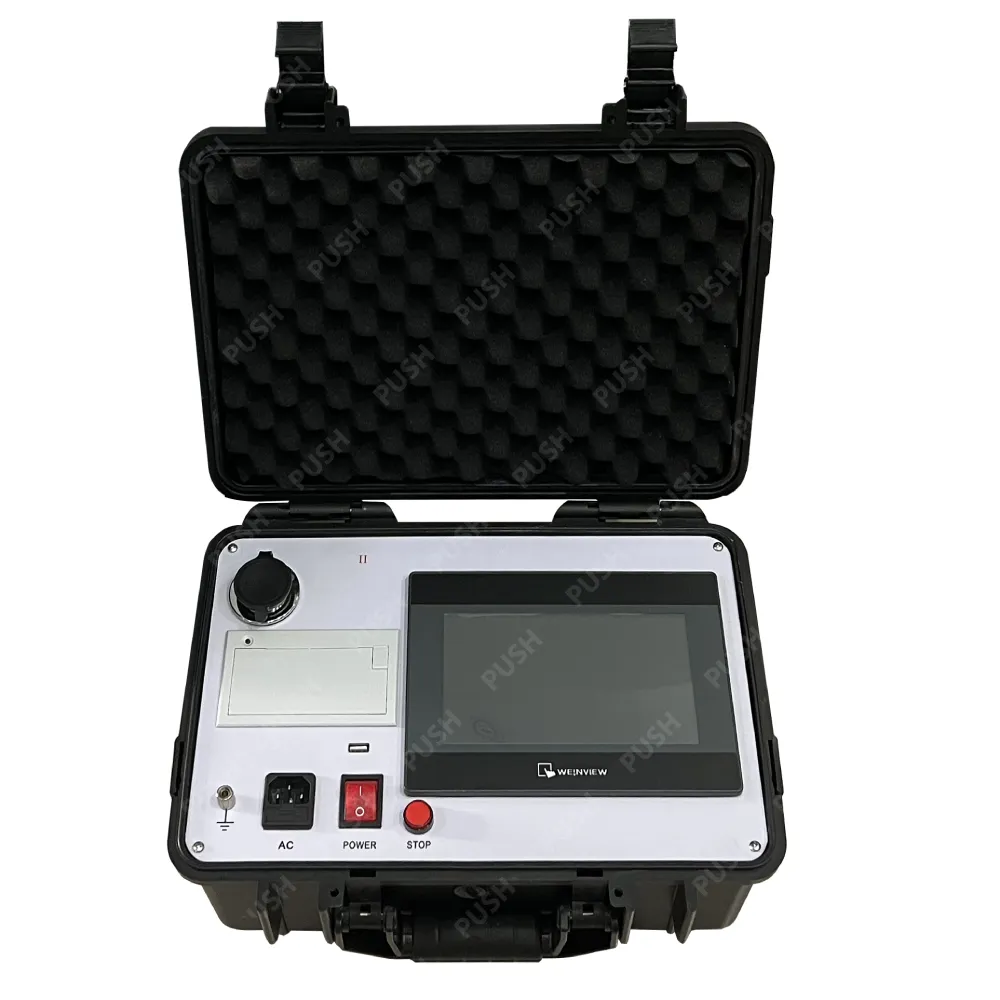 English
English


Understanding the Functionality and Applications of a Winding Resistance Measurement Tool
Understanding Scope Winding Resistance Meters An Essential Tool in Electrical Engineering
In the realm of electrical engineering, accurate measurement of winding resistance is crucial for ensuring the optimal performance and longevity of electrical equipment such as transformers, motors, and generators. One of the key instruments used for this measurement is the winding resistance meter. This specialized tool serves not only to assess the condition of windings but also to troubleshoot potential issues before they escalate into more costly problems.
What is a Winding Resistance Meter?
A winding resistance meter is an electronic device designed to measure the resistance of electrical windings in machinery. It operates by applying a controlled amount of current through the winding and measuring the resulting voltage drop. The primary purpose of this measurement is to calculate the winding resistance using Ohm’s Law, which states that Voltage (V) = Current (I) × Resistance (R).
The winding resistance meter can vary in complexity, from simple analog devices to advanced digital models that offer features like data logging and Bluetooth connectivity for remote monitoring. This versatility makes it suitable for a wide range of applications across different industries, including power generation, manufacturing, and maintenance services.
The Importance of Winding Resistance Measurement
Monitoring the winding resistance of electrical machines is vital for several reasons
1. Preventing Overheating High resistance in windings can result in excessive heating during operation. This overheating can lead to insulation failure and, ultimately, equipment breakdown. By routinely measuring winding resistance, operators can identify potential overheating issues before they cause significant damage.
2. Assessing Insulation Integrity The resistance of windings can give insights into the condition of the insulation material. Deteriorating insulation leads to decreased winding resistance, which can indicate a looming failure if not addressed timely.
3. Improving Efficiency Electrical machines operate most efficiently when their windings have optimal resistance levels. By ensuring that resistance is within the prescribed limits, facilities can enhance operational efficiency, reduce energy consumption, and lower operational costs.
scope winding resistance meter

4. Preventive Maintenance Regular checks on winding resistance are a key element of preventive maintenance programs. By establishing a baseline for winding resistance values, maintenance teams can detect trends over time and predict failures based on deviations from these norms.
How to Use a Winding Resistance Meter
Using a winding resistance meter is relatively straightforward, provided that proper safety protocols are followed. The process typically involves the following steps
1. Preparation Ensure the equipment is de-energized and properly isolated from the power supply. Safety gear, such as gloves and goggles, should be worn to protect against electrical hazards.
2. Connection Connect the meter's leads to the appropriate terminals of the winding. Attention should be paid to ensure secure connections for accurate measurements.
3. Measurement Activate the meter to begin the measurement. The device will apply current and display the resultant resistance. Some meters also provide features to average readings to account for fluctuations.
4. Analysis After taking measurements, compare the results against manufacturer specifications or historical data. A consistent pattern of increasing resistance may indicate potential issues requiring further investigation.
Conclusion
A winding resistance meter is an indispensable tool for electrical engineers and technicians in their quest to maintain the reliability and efficiency of electrical machines. By providing accurate measurements of winding resistance, these meters aid in the timely identification of potential issues, ensuring that machinery continues to operate smoothly and efficiently. Regular monitoring is essential not only for maintaining equipment health but also for optimizing energy usage and minimizing costly downtime.
-
Differences between open cup flash point tester and closed cup flash point testerNewsOct.31,2024
-
The Reliable Load Tap ChangerNewsOct.23,2024
-
The Essential Guide to Hipot TestersNewsOct.23,2024
-
The Digital Insulation TesterNewsOct.23,2024
-
The Best Earth Loop Impedance Tester for SaleNewsOct.23,2024
-
Tan Delta Tester--The Essential Tool for Electrical Insulation TestingNewsOct.23,2024





